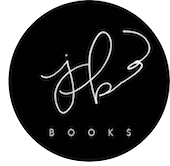This one goes out to all you post-NaNoers. And everyone else knee-deep in the thick of their own rambling, misspelled words. Last week, I talked a little bit about how I just recently merged my dual timelines, and now I'm all, "Holy Heck, this looks like a book." When I made this merge, I realized there were a few filler scenes that I needed to finish writing, before I could print out the dang thing and get a good look at it. I'm happy to say that I only have two more filler scenes + the final scene (which I am shaking in my boots just thinking about) until I can move forward with what I consider to be my second draft editing.
When people say that writing is hard work, I think they really mean editing is hard work. Dear Lord, is it tough. My second draft of These are the Moments is a mix of edited and non-edited chapters, that I am fully prepared to hack into with my pink pen (red's too creepy) once all of the writing is done, done, done. I have a strategy, I promise you. First step, write the book: check. Second step: merge the timelines: check. And for my editing plan? Well, it goes a little something like this (ten points if you caught that Aaron Carter reference):
An In-Depth Read-Through
This is what writer people like to call "macro edits." Big picture stuff. My first read-through isn't going to be a hey, I think you missed a comma there kind of reading. It's going to be a you gave that girl two different last names and a what happened to the cat kind of editing. Here's what to look for in this stage:
- Subplots: Do they each have enough "screen time," so to speak? Are they evolving? Is there a resolution? For example, my main character, Wendy, and her relationship with her sister Claudia is an integral subplot. They begin the novel a little distant, their age difference acting as a kind of barrier, and by the end, well…. you'll see.
- Themes: What's your story trying to say? And more importantly, how well is it communicating that message? I'm not a huge believer in the bold, HEY THIS IS THE THEME method. I think stories affect everyone in different ways. Example: one theme of TATM is the idea of growing up and dealing with that post-college phase of your life. This is communicated through her living at home again, getting used to a full-time job and trying to be self-sufficient. In the end, Wendy has to realize that she's an adult now. But it takes a while to get to that point!
- Transitions: This one is doubly important for me, as I'm basically making two stories fit to one. But in general, is your story fitting together? Can readers follow your zigs and zags? My story covers ten years of livin' so it's especially important for me to keep readers grounded in when things are happening. The last thing you want is for a reader to get confused. They'll most likely give up.
Keep notes from your first reading. In a notebook or in the margins of your print-out. Whatever you feel most comfortable with!
Review and Edit
Wow, what a whirlwind, huh? Okay, now's the part where you go back and check out all the crazy notes you made. Then make the changes. This might involve big edits, like reworking full scenes, or minor edits like cutting sentences or paragraphs. On the first round, try to focus on the big issues first, and then trickle your way down to the baby fixes. With TATM, I don't anticipate too many total scene reworkings. I conquered a good deal of that when I transferred my scenes from paper to computer.
Was that so bad? Yeah, it was. I'm not gonna lie to you. But guess what! It gets easier… I think. The next step is another read-through, with a narrower focus. Look for things like hey I use the word "look" a heck of a lot and okay, I need to vary those sentences a bit. Actually, now that I think about it, this step might be even tougher than the first. I tend to drive myself crazy over this kind of thing, over thinking it, when I should just leave well alone. Hey Jenny, nobody cares how many times you used the word blue. They just don't. Keep a little perspective, I'd say. After this round of edits, make the changes. Read, Edit, Repeat. More and more focused with each cycle. You get it.
END NOTE: This has nothing to do with anything in this post, but I'm currently reading a fantastic set of e-books on self-publishing, called The Indie Author Power Pack: How To Write, Publish, & Market Your Book. I highly recommend!
What's your best advice on the editing process? No, really. Help a sister out.

